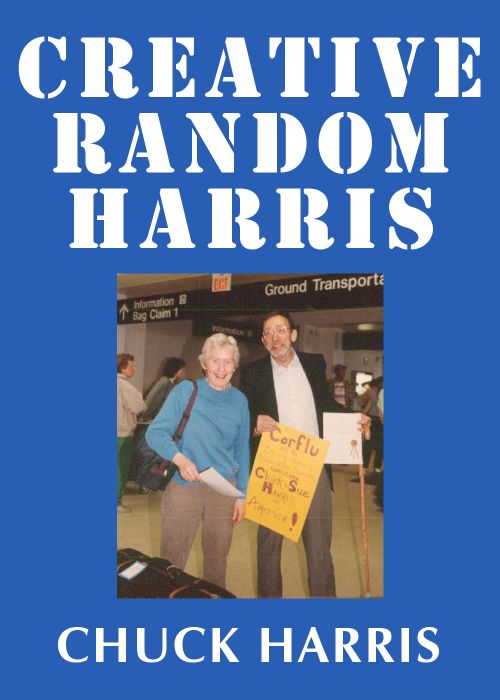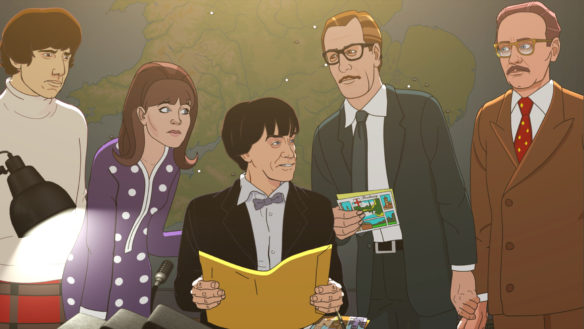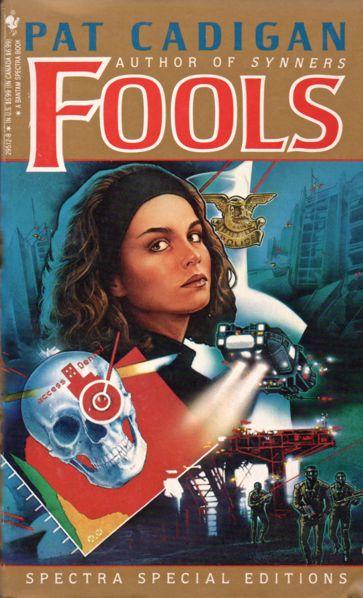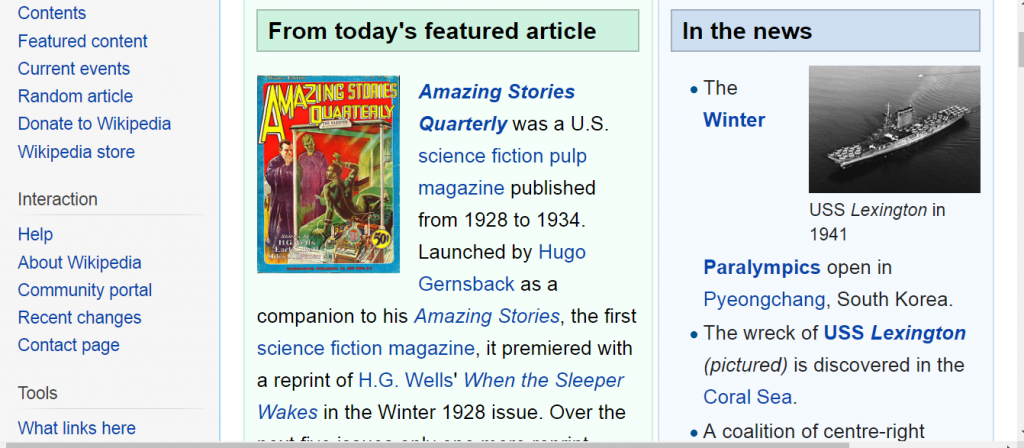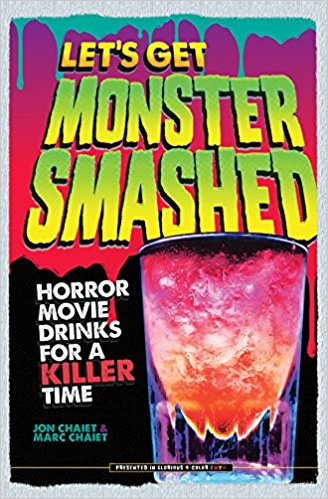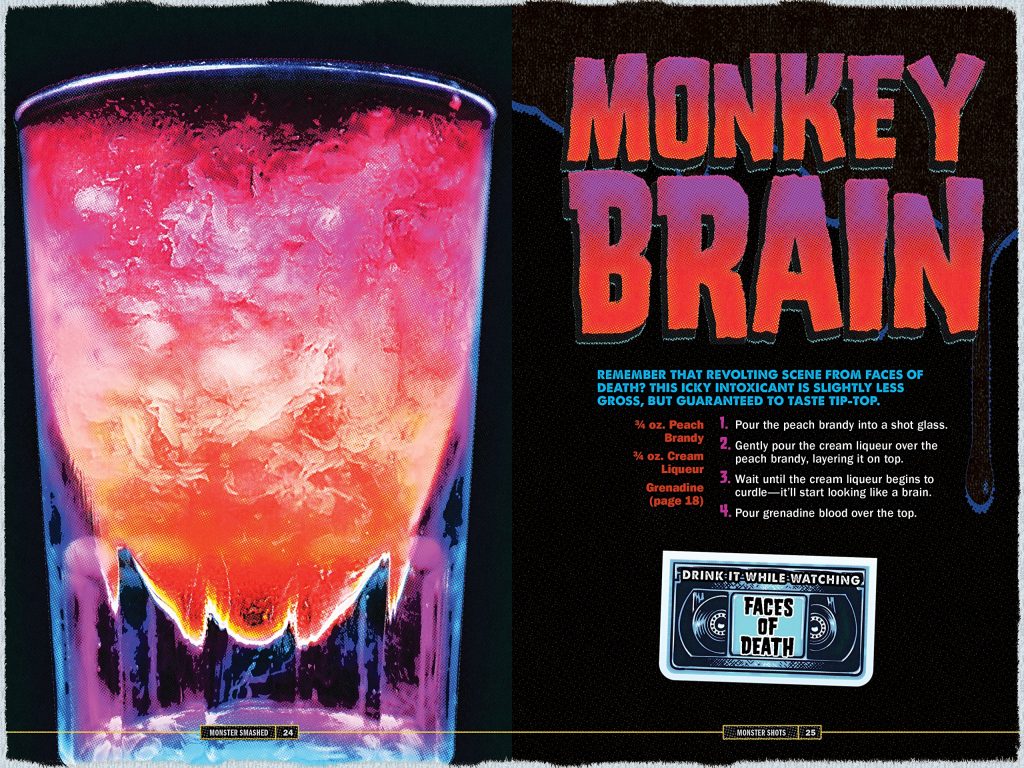(1) NEBULA AWARDS TOASTMASTER NAMED. Sarah Gailey, Nebula and Hugo finalist, will serve as toastmaster for SFWA’s 59th Annual Nebula Awards® Ceremony. The ceremony will take place in Pasadena, CA on June 8, 2024. The organization will be livestreaming the ceremony on YouTube.

Sarah Gailey is a Hugo Award Winning and Bestselling author of speculative fiction, short stories, and essays. They have been a finalist for the Hugo, Nebula, and Locus awards for multiple years running. Their bestselling adult novel debut, Magic For Liars, was published by Tor Books in 2019. Their most recent novel, Just Like Home, and most recent original comic book series with BOOM! Studios, Know Your Station are available now. Their shorter works and essays have been published in Mashable, The Boston Globe, Vice, Tor.com, and The Atlantic. Their work has been translated into seven different languages and published around the world.
Honoring 2023’s outstanding SFF genre works, the Nebula Awards Ceremony will be a highlight of the hybrid 2024 SFWA Nebula Conference, taking place June 6-9, 2024, online and at the Westin Pasadena in Pasadena, CA. Aspiring and professional storytellers in the speculative fiction genres may benefit from attending the entire professional development weekend full of panels and networking opportunities.
Tickets for the Nebula Awards Ceremony banquet, which precedes the ceremony itself, are also available. Queries and banquet tickets may be purchased by emailing [email protected] or visiting events.sfwa.org.
(2) SAMUEL R. DELANY PRIDE MONTH Q&A SCHEDULED. Author Samuel R. Delany will be interviewed live in Philadelphia in June: “Pride Month: How Science Fiction Dances to the Music of Time”. Saturday, June 15, 2024. 3:30 p.m. Eastern. In the Music Department at Parkway Central Library (1901 Vine Street (between 19th and 20th Streets on the Parkway), Philadelphia, PA 19103).

“A visionary novelist & a revolutionary chronicler of gay life” (The New Yorker), Samuel R. Delany speaks with Music Department library trainee & Hollywood indie film composer Mark Inchoco on the intersections between science fiction & music. Hear how great musicians, librettists, & musical events such as Cab Calloway, Pete Seeger, the Newport Folk Festival, Igor Stravinsky, Bob Dylan, Samuel Barber, Leontyne Price, & Macy Gray came into Delany’s art & life.
In conversation with Mark Inchoco, library trainee, conductor, & Hollywood indie film composer
Samuel R. Delany is a novelist, literary critic, & emeritus professor. He is the winner of four Nebula Awards, two Hugo Awards, the William Whitehead Memorial Award for lifetime contribution to gay & lesbian literature, & the Anisfield-Wolf book award. He was inducted into the Science Fiction Hall of Fame in 2002. In 2013, he was named the 31st Damon Knight Memorial Foundation Grand Master by the Science Fiction & Fantasy Writers of America.
Delany’s novels include Babel-17, The Einstein Intersection, Nova, & Dhalgren. His collection, Tales of Nevèrÿon, contains the first novel-length story to address the AIDS crisis. His 2007 novel Dark Reflections won the Stonewall Book Award. He is the author of the widely taught Times Square Red / Times Square Blue, & his book-length autobiographical essay, The Motion of Light in Water, won a Hugo Award in 1989. His interview in The Paris Review’s “Art of Fiction” series appeared in spring 2012. In 2015 he was the recipient of the Nicolas Guillén Award for philosophical fiction. Delany retired from teaching literature & creative writing at Temple University at the end of 2015. He lives in Philadelphia with his partner, Dennis Rickett.
Mark Inchoco is a composer, conductor, & music librarian from Port Richmond. His film scores were screened at the Academy Award & BAFTA qualifying LA Shorts Festival & the Newport Beach Film Festival. His compositions were performed in the U.S. & Europe. In 2018, Inchoco was the first music historian laureate of the Cité Internationale des Arts by the French Republic. Currently, he is assistant conductor of the Lower Merion Symphony. Inchoco holds degrees in English & historical musicology from Temple & the University of California, Riverside.
Location: Montgomery Auditorium
(3) TIME’S UP. Variety has snaps of last night’s J.G. Ballard-themed event: “Met Gala 2024 Red Carpet Photos: The Best Celebrity Looks”. View the photo gallery at the link.
The theme of “The Garden of Time” is drawn from J.G. Ballard’s 1962 short story of the same name. The garden party theme is already in full bloom as the Metropolitan Museum of Art’s stairway is adorned with hundreds of fake flowers. This gala complements the Met’s current exhibit, “Sleeping Beauties: Reawakening Fashion.”
The exhibit “which opened for press previews on Monday morning, features approximately 250 rare items drawn from the Institute’s permanent collection. Spanning over 400 years of fashion history, the pieces include designs by Schiaparelli, Dior, Givenchy, and more.”
(4) SF ENCYCLOPEDIA’S LATEST CENSUS. Yesterday John Clute delivered Facebook readers “Another periodic ruthless Encyclopedia of Science Fiction blurb”.
We’ve just gone over 7,000,000 words, almost 10 times the length of the 1979 edition, more than 5 times longer than 1993. We’re still a dozen short of 20,000 entries but hey. Have also reached 34,000 scans in the Picture Gallery, most of them of first editions (but also retitlings and revisions). We are homing in on 250,000 internal hyperlinks, way better than double the 2011 figure, when we went online with Gollancz.
—We’ll never change our title, which has been in our bones early and late, but our entries today do reflect the fact that genre sf is now a large raft in a huger flood….
(5) ON GENDER IN BAUM. Abigail Arnold analyzes “B-Sides: L. Frank Baum’s ‘The Enchanted Island of Yew’” at Public Books.
…The Enchanted Island of Yew (published in 1903, early in his Oz phase) stands out by any account. Yet this matter-of-fact tale of gender transformation has never received the buzz accorded to Baum’s more famous series. Perhaps what is most laudable about the book, in retrospect, is the unconcerned tone with which the narrative presents the subversive “gender trouble” at its heart.
The gender agnosticism of Baum’s work contrasts noticeably to the priorities of the world around him. In his 1906 children’s fantasy John Dough and the Cherub, Chick the Cherub, a young child, is never assigned a gender. When Baum’s publishers came after him about this, he allegedly replied, “I cannot remember that Chick the Cherub impressed me as other than a joyous, sweet, venturesome and loveable child. Who cares whether it is a boy or a girl?”1 Bad timing: in an era rife with threatening jeremiads about “the New Woman” and pressure on men to trade domesticity for adventure tales and sporting life,2 the publishers were dissatisfied with casual gender ambiguity. They launched a contest for child readers, offering prize money for the best answers as to whether Chick was a boy or a girl and why.3
Baum himself, though, did not succumb. While the world around him fixated on gender and instilled the ideas of conventional gender presentation in children from a young age—to the point of paying them to go along!—gender play is just one element among many that makes up his fantasy worlds….
(6) BEHIND CLOSED DOORS? “The Complicated Ethics of Rare-Book Collecting” in The Atlantic. Paywall surmounted, courtesy Brad Verter.
…The dilemma regarding the ethical placement of a rare book isn’t convoluted for Tom Lecky, who was the head of the rare-books and manuscripts department at the auction firm Christie’s for 17 years and now runs Riverrun Books & Manuscripts. When I mentioned the Hemingway manuscript of “The Short Happy Life of Francis Macomber” that sold for $248,000 at Christie’s back in 2000, he pointed out that institutions had had “every bit the opportunity to buy it as a private individual.” Other singular works that have been up for auction are James Joyce’s “Circe” manuscript, Sylvia Plath’s personally annotated Bible, a serial printing of Uncle Tom’s Cabin in the National Era newspaper, and the proofs of that first Great Gatsby dust jacket. In each case, I was captivated by their fate. The National Library of Ireland bought Joyce’s manuscript for $1.5 million and digitized it; Plath’s Bible went to an undisclosed buyer for about $11,000; so did the newspapers, for $126,000. Nobody placed a winning bid for the Gatsby cover art.
For Lecky, the ethical question we should be asking isn’t whether institutions should acquire rare books instead of collectors, but what happens when “a private owner owns something that no one knows that they have.” Lecky, like many others in the trade, works to dispel myths about how private collections work. Private collections tend to be temporary and books often jump between hands, but for the time that a collector owns a book, in my view, they should make efforts to share it. “Most collectors don’t think of it as possession but caretaking,” Lecky said. “They’re a piece of the chain in the provenance, not the end of it.”…
(7) TODAY’S BIRTHDAY.
[Written by Cat Eldridge.]
Born May 7, 1922 — Darren McGavin. (Died 2006.) How could I possibly resist doing the Birthday of Darren McGavin?
Before we get to very obvious reason why I’m doing him, let’s look at some of his other genre and perhaps not-so-genre work.
I’m fairly sure his earliest genre role was in the Tales of Tomorrow anthology series as Bruce Calvin in “The Duplicates” episode which was over seventy years ago. I’m reasonably sure that his next genre role is a decade later in Witchcraft in a major role as Fred.
He has a lot of genre appearances, some of which I’ll note here. He’s in A Man from U.N.C.L.E. as Victor Karmak in “The Deadly Quest Affair” and yes, I remember him in that episode; the same year he shows up in Mission: Impossible as J. Richard Taggart in “The Seal”; several years later, he’d be in the pilot of Six Million Dollar Man as Oliver Spencer. I never did really get into that series, or that spin-off one. And he’s even in The Martian Chronicles as Sam Parkhill.
He was also I think, and let me now go check, yes he was, in the first television series featuring Mike Hammer as that character in Mickey Spillane’s Mike Hammer serieswhich was the syndicated television series based on Spillane’s series. Though it only ran from January 7, 1958 through November 28, 1959, it had seventy-six half-hour episodes.

Fifty-one years ago, ABC aired The Night Stalker, the first of two films that preceded Kolchak: The Night Stalker series, the other being The Night Strangler. I’m reasonably sure that I’m seen them though I can’t remember seeing them. This is a casting decision when Darren McGavin was the only performer considered for the role.
And oh did he ever settle into the role of Chicago reporter Carl Kolchak who investigates mysterious incidents. He encountered, to name some of his stories that his Editor didn’t believe, an alien stranded on Earth, a prehistoric ape-man created from cell samples, vampires (of course he had to given the original character in the novel did), mummies, and a zombie. Even an android. I thought they did the headless motorcycle rider rather well.
His character originated in an unpublished novel, The Kolchak Papers, written by Jeff Rice about a Vegas newspaper reporter named Carl Kolchak tracks down and defeats a serial killer who turns out to be a vampire. Yes, the novel is not available as an epub. And Rice wrote yet more novels based on this series.
What I hadn’t realized some fifty years on from first seeing it as a teenager and some thirty years since I last saw it was that of 26 episodes ordered, only 20 were produced. I could’ve sworn that I saw more episodes than that! There was a 2005 revival of 10 episodes, only 6 of which aired before ABC cancelled it due to abysmally bad ratings.
Carter wanted McGavin to appear as Kolchak in The X-Files, but McGavin was very adamant that he would not reprise the character for the series. However he would appear in several episodes as Arthur Dales, a retired FBI agent who was supposed to be the “father of the X-Files”.
In the third episode of the 2016 revival series, a character prominently featured in the “Mulder and Scully Meet the Were-Monster” episode is conspicuously attired in Kolchak’s trademark seersucker jacket, black knit tie, and straw hat. Why so, you ask? Well, you should ask.
The episode can trace its origin back to a script entitled “The M Word” episode of the the Night Stalker. X-File’s executive producer Frank Spotnitz’s was also the executive producer for that series. So that script was reworked by a different writer into this script with Kolchak being given a nod.
The series is airing Peacock for free or Amazon for $1.99 an episode. Peacock has a lot of SF like Farscape, Primeval, the original Quantum Leap and the now-cancelled reboot series, and Warehouse 13. Oh, and Columbo as well. I know it’s not genre, but I thought I’d mention it. Alas McGavin never appeared in a Columbo mystery. Too bad.
(8) COMICS SECTION.
- Brewster Rockit might have tuned into a convention.
- Broom Hilda now just needs the beginning and the middle.
- Shoe is funny if you’re old enough to get it.
- The Argyle Sweater says believe when a kid says something is under the bed.
- Mannequin on the Moon thinks Shel Silverstein needs to make a point.
(9) REPLICANTS RETURNING. “Michelle Yeoh to Star in ‘Blade Runner 2099’ Series at Amazon” reports Variety.
The “Blade Runner” series in the works at Amazon Prime Video has cast Michelle Yeoh in a lead role, Variety has learned.
The series, titled “Blade Runner 2099,” was ordered at Amazon in September 2022. It serves as a sequel to both the original “Blade Runner” film and the followup film, “Blade Runner 2049.” Exact plot details are being kept under wraps, but sources say Yeoh will play a character named Olwen, described as a replicant near the end of her life…
(10) IT’S A PREQUEL AND A SEQUEL. But not a breath mint. Walt Disney Studios dropped a teaser trailer for Mufasa: The Lion King, in theaters December 20.
A lion who would change our lives forever. #Mufasa: The Lion King. “Mufasa: The Lion King” enlists Rafiki to relay the legend of Mufasa to young lion cub Kiara, daughter of Simba and Nala, with Timon and Pumbaa lending their signature schtick. Told in flashbacks, the story introduces Mufasa as an orphaned cub, lost and alone until he meets a sympathetic lion named Taka—the heir to a royal bloodline. The chance meeting sets in motion an expansive journey of an extraordinary group of misfits searching for their destiny—their bonds will be tested as they work together to evade a threatening and deadly foe.
(11) REALLY HARD SF. When you make the science hard enough, most science fiction goes out the window. But not all of it. “The Movies That Confronted the Scariest Challenges of Space Travel” at Den of Geek.
Space is great. It’s massive, it’s colorful, and you can have big fights with lasers there. It really does have everything you could want. But it also has problems—mainly, like we said, that it’s massive. In fact it’s so massive that if you want to go anywhere in it (apart from a few nearby planets with hardly anyone to shoot lasers at), by the time you get there, you’re dead. Now you might think that if you can just go fast enough, you’ll get there before you die, but there’s a problem.
That problem, as Albert Einstein tells us, is the speed of light….
Here’s one of the films that Den of Geek gives a passing grade:
Interstellar (2014)
Christopher Nolan’s space exploration flick is probably the most famous take on time dilation. It is, it has to be said, a film that has done its homework. Although it uses a wormhole to get our astronauts into outer space, a combination of speed and veering too close to serious gravity wells means that decades pass at home while only a short time passes on board the ship. As well as portraying some of the realities of time dilation, this movie also gave us our most scientifically accurate visualization yet of a black hole.
It also, admirably, does not insist on a magic backward-time-travel fudge to restore a familial status quo at the end. The film ends with Matthew McConaughey reunited with his daughter, who is now an old lady, and there is no question of magically reversing that to let him watch her grow up. But even here, the scientifically accurate black hole allows Matthew McConaughey to send a message backward in time to his daughter’s childhood because of the cosmic power of love, or something, making the entire plot into a bootstrap paradox.
(12) QUANTUM CLICKBAIT. “’Warp drives’ may actually be possible someday, new study suggests” – well, not exactly, admits Space.com.
…Alcubierre published his idea in Classical and Quantum Gravity. Now, a new paper in the same journal suggests that a warp drive may not require exotic negative energy after all.
“This study changes the conversation about warp drives,” lead author Jared Fuchs, of the University of Alabama, Huntsville and the research think tank Applied Physics, said in a statement. “By demonstrating a first-of-its-kind model, we’ve shown that warp drives might not be relegated to science fiction.”
The team’s model uses “a sophisticated blend of traditional and novel gravitational techniques to create a warp bubble that can transport objects at high speeds within the bounds of known physics,” according to the statement.
Understanding that model is probably beyond most of us; the paper’s abstract, for example, says that the solution “involves combining a stable matter shell with a shift vector distribution that closely matches well-known warp drive solutions such as the Alcubierre metric.”
The proposed engine could not achieve faster-than-light travel, though it could come close; the statement mentions “high but subluminal speeds.”
This is a single modeling study, so don’t get too excited….
(13) ONE FOOT AT A TIME. [Item by Mike Kennedy.] How is Superman like you? According to the first official photo from the upcoming reboot movie, when he’s getting dressed it’s how he, um, re-boots.
David Corenswet, 30, stars in the first official photo from the upcoming Superman reboot, directed by James Gunn.
[Thanks to Andrew Porter, John King Tarpinian, Chris Barkley, Daniel Dern, Cat Eldridge, SF Concatenation’s Jonathan Cowie, Steven French, Teddy Harvia, Kathy Sullivan, and Mike Kennedy for some of these stories. Title credit belongs to File 770 contributing editor of the day Jack Lint.]


